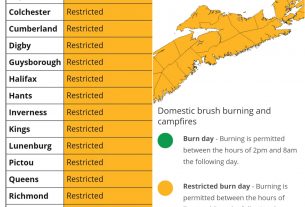**** Info via Environment Canada
El Niño develops in tropical Pacific
El Niño has made a comeback in the tropical Pacific after a seven-year absence, leading to potential changes in weather patterns. The World Meteorological Organization (WMO) predicts a high likelihood of El Niño persisting in the latter half of 2023, although with moderate strength.
El Niño is a natural phenomenon characterized by warmer ocean temperatures in the central and eastern tropical Pacific Ocean. While it occurs periodically, the influence of human-induced climate change raises concerns about its potential impacts. El Niño has the potential to break temperature records and trigger episodes of extreme heat in various parts of the world.
El Niño typically occurs every two to seven years, lasting several months. Its effects vary across regions, with increased rainfall observed in some areas, including southern South America, the southern United States, the Horn of Africa, and central Asia. On the other hand, El Niño can result in droughts in regions such as Australia, Indonesia, southern Asia, Central America, and northern South America.
El Niño weather and climate patterns. Source: World Meteorological Organization.
How does El Niño affect Canada?
Historically, Canada is mostly affected by El Niño during winter and spring. Milder than normal winters and springs occur in Western, Northwestern and Central Canada. Generally, El Niño does not significantly impact Eastern Canada, including the Maritimes, but it may reduce tropical cyclone activity in the Atlantic Ocean.




